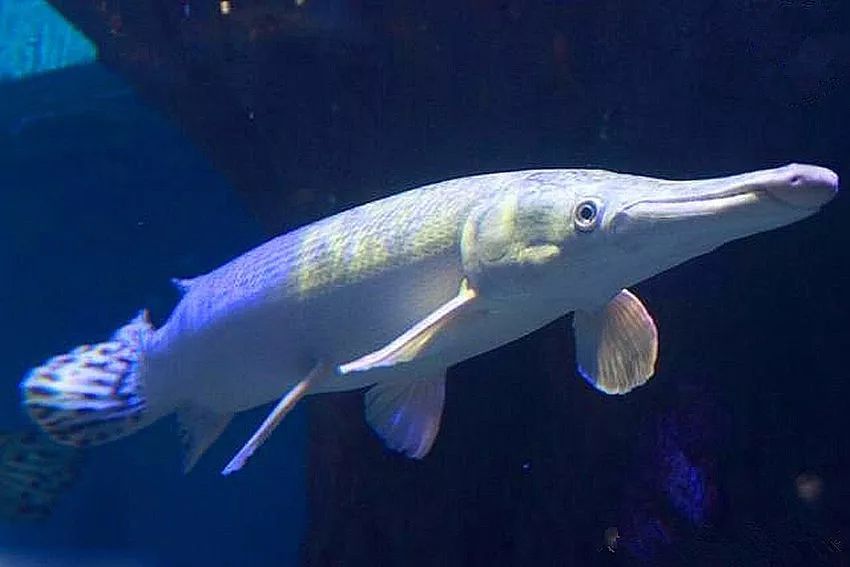The alligator gar is named for its short snout like an alligator and two rows of dagger-like teeth. It is the largest of the seven existing species of North American gar. It is a prehistoric fish that has lived on Earth for more than 100 million years. Fossils date back to the Upper Cretaceous. In ancient times, it was found throughout North America, Europe, India, and Africa, but is now only found on the eastern side of North America, Central America, and Cuba.

Alligator gar are slow-moving, but they are fierce ambush predators. They will wait quietly in the water until an unsuspecting fish swims over, then suddenly pounce on the prey, desperately swinging left and right, and finally successfully capture the prey.
Alligator gar is a carnivorous fish with extremely strong destructiveness. If it is released into natural waters, it will bring disaster to the local aquatic ecosystem. "As long as it is a living thing in the water, it will eat almost everything." It is precisely because of the fierceness of alligator gar that they are listed as invasive species that are key to defense by all countries. It can be imagined that if such a fish enters a certain freshwater area, it will almost cause a devastating blow to the local ecological environment. After all, in terms of combat effectiveness, there are not many freshwater fish that can compete with alligator gar. There are only some freshwater fish in North America that can threaten alligator gar (such as arapaima, etc.).
There is a reason why alligator gar can be so rampant, that is, their reproduction process is almost not disturbed. It should be noted that no matter how fierce any species is, it is still vulnerable in its infancy. If predators eat the eggs of alligator gar, wouldn't that fundamentally solve the problem? Unfortunately, this is not feasible because the eggs of alligator gar are highly toxic, and other creatures will die if they swallow them. If people provoke it or it is frightened, it will attack humans.
Alligator gar is accused of having a tendency to attack humans violently, most of which occurs in Lake Pontchartrain in Louisiana. The New Orleans Journal once published an article saying that alligator gar poses a greater threat to human life than "man-eating sharks". But in fact, there is not much evidence that this fish is indeed aggressive to humans. Studies have shown that alligator gar do not have a strong bite force and will not actively attack prey or people that are larger than 1/2 of their own size.
Because it eats everything, few other fish live in the waters where alligator gar live, affecting the harvest of fishermen. In order to protect the aquatic ecology, local governments have approved hunting, but this fish is extremely difficult to catch. Although the greedy alligator gar is easy to catch, its mouthful of sharp teeth can bite through the fishing line made of steel wire, and it struggles hard after being hooked.
Listed in the "Red List of Endangered Species of the World Conservation Union" (IUCN) 2018 ver 3.1-Least Concern (LC).
Protect wild animals and eliminate game.
Maintaining ecological balance is everyone's responsibility!